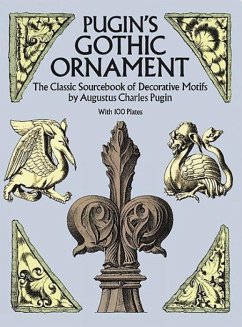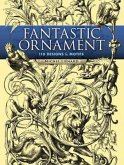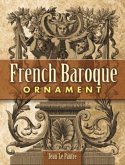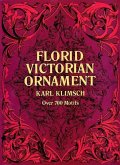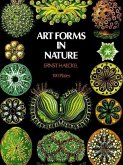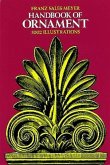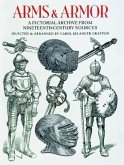An architect and archaeologist born in France, Augustus Charles Pugin (1762-1832) fled to England during the Revolution and worked there for 17 years in the London office of the noted architect John Nash. Pugin's interest in the Gothic style -- coming early during the Gothic Revival -- resulted in this influential and exquisitely drawn book of architectural ornaments, each item copied with rare precision and flair from the original decoration. The 100 superb royalty-free plates in the present volume have been meticulously reproduced from a very rare early edition of plates dating from 1828-31. Here is a wealth of floral, foliate, and other designs rendered from panels, capitals, borders, brackets, friezes, and other decorative elements adorning (primarily) ecclesiastical architecture. Included are finely detailed drawings of grotesques from the New College Chapel at Oxford, wooden choir-stall finials and elbow rests, wooden door ornaments and stone stringcourses from Rouen Cathedral, stone spandrels, and ornamental wooden and stone cusps from a number of English churches and chapels, stone paterae from Winchester Cathedral, and much more. Decorative samples from secular buildings include renderings of stone capitals from Kenilworth Castle, stone bosses from Eltham Palace in Kent, and brass figures from the tomb of Earl of Warwick. Now regarded as one of the major sourcebooks of Gothic ornamentation, Pugin's illustrations will be welcomed by students of architectural history and design as an invaluable reference tool. Artists, illustrators, designers, and craftspeople will find these ready-to-use motifs an inspiring source of excellent designs for fabrics, wallpaper, tiles, and many other projects. Reprint of Gothic Ornaments Selected From Various Buildings in England and France, Preistly & Weale, London, 1828-1831.
Hinweis: Dieser Artikel kann nur an eine deutsche Lieferadresse ausgeliefert werden.
Hinweis: Dieser Artikel kann nur an eine deutsche Lieferadresse ausgeliefert werden.

